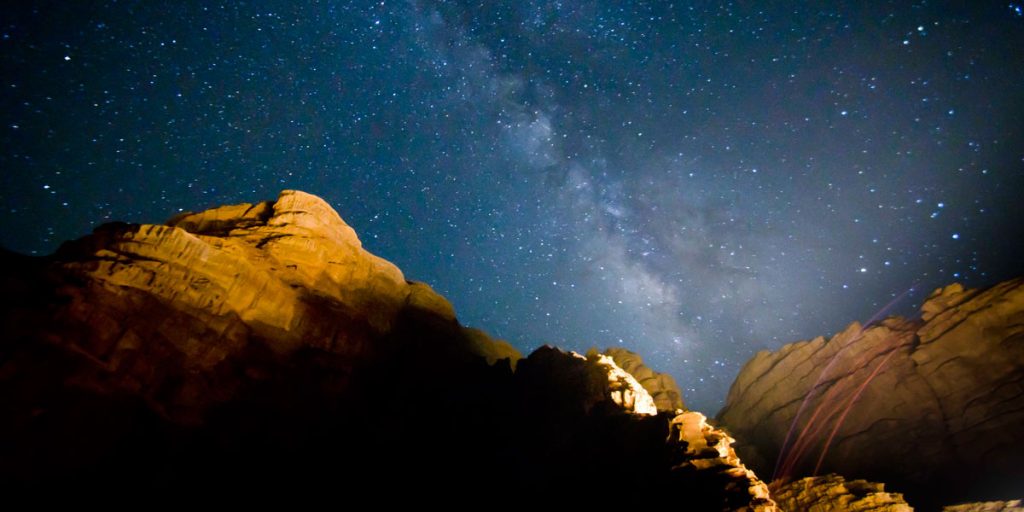April hasn’t run out of surprises just yet. Over the next two weeks, skywatchers are in for a rare treat. The night skies above Egypt are putting on a rare show, with nearly a dozen astronomical events lined up back-to-back.
Whether you’re a seasoned stargazer or someone who just enjoys stepping outside for a moment of quiet, now’s the perfect time to look up.
With several planets lining up, meteor showers streaking across the night, and the Moon dancing through the sky, there’s something to see almost every day. Let’s walk through the upcoming highlights, from glowing star pairings to early-morning planetary meetups!
April 22–23—Lyrid Meteor Shower Peaks
One of April’s main events, the Lyrid meteor shower, reaches its peak between the 22nd and 23rd. Expect up to 20 meteors an hour under dark skies, especially after midnight.
These streaks of light come from leftover debris from Comet Thatcher and appear to radiate from the Lyra constellation. The best part is that you don’t even need a telescope to see this event—just find a dark spot and enjoy the show.
April 25—A Triple Encounter: Moon, Venus, and Saturn
Just before sunrise, around 4:40 AM, the Moon, Venus, and Saturn will rise in a neat vertical line. It’s a stunning sight, especially since you may also catch Mercury hovering low on the eastern horizon.
The entire scene should fade as daylight begins, so early risers will have the advantage.
April 26—A Close-Up of the Moon and Mercury
The next morning, at about 5:15 AM, the Moon and Mercury will appear side by side in the eastern sky. It’s a quick appearance, though, so you’ll need to be in place before sunrise to see the pair before they vanish into the growing light.
April 27—A Moon You Can’t See
Though invisible to the eye, April 27 marks two big lunar moments: the Moon reaches its closest point to Earth (perigee), and it also enters the new moon phase.
This means the sky will be at its darkest—an ideal window for anyone hoping to photograph deep-sky objects like galaxies or star clusters.
April 28—Venus and Saturn in a Celestial Pairing
In the early morning hours, Venus and Saturn come close enough in the sky to look like neighbors. They rise together around 4:30 AM and remain visible until the sunrise light dims the view. Luckily, you won’t need any equipment—just a clear view of the eastern horizon.
April 29—The Moon and the Pleiades Cluster Reunite
To close out the month, the Moon will meet the Pleiades star cluster again—its second visit this April. Look west right after sunset. By around 9:10 PM, both will dip below the horizon, so catch this elegant pairing while you can.
Don’t Miss the Shows
With so many unique events packed into just a couple of weeks, there’s something for everyone this April. Whether you’re marveling at a meteor shower, catching a planetary meetup, or just enjoying a clear night sky, it’s a good time to pause and look up!
WE ALSO SAID: Don’t Miss…Mapping the Cosmos: The Birth of Astronomy and Astrology in Ancient Egypt and Babylon



